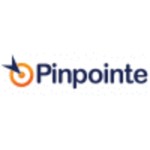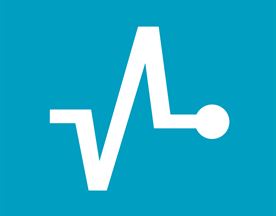Unlocking the potential of confirmation email templates is like opening a treasure chest for your business.
Confirmation emails, particularly the “confirmation email template,” are the unsung heroes of customer communication, working tirelessly behind the scenes to build trust and loyalty.
In this treasure trove, you’ll find examples and best practices that will help you craft the perfect confirmation email template for every occasion.
No matter the type – order, shipping, booking, registration, or cancellation/unsubscribe – confirmation email templates play a crucial role in establishing and maintaining customer relationships.
By exploring the various types, benefits, and best practices of the confirmation email template, you’ll be well on your way to mastering the art of confirmation emails and setting your business on a path to success.

Summary
Understand confirmation emails and utilize templates & examples to craft impactful messages.
Personalize subject lines, use customer data, and include relevant CTAs for a positive customer experience.
Measure success with key metrics & optimize using A/B testing strategies for maximum effectiveness.

Understanding Confirmation Emails
Confirmation emails provide a foundational level of communication that companies utilize to establish an early relationship with the customer.
They come in various types, such as order, shipping, booking, registration, or cancellation/unsubscribe confirmations, and offer numerous benefits to businesses, such as cultivating customer relationships and providing useful insights.
By taking advantage of the templates and examples available and focusing on the reader’s sentiments and emotions, you can craft impactful confirmation emails that resonate with your audience.
Plus, sending automated confirmation emails after each purchase guarantees that customers have all the necessary information regarding their purchase or subscription, thereby enhancing customer satisfaction and loyalty, while also raising open rates up to 70%.
Types of Confirmation Emails
Various types of confirmation emails cater to different customer interactions, such as order confirmation, shipping confirmation, booking confirmation, newsletter confirmation, and subscription confirmation.
Order confirmation emails, for example, are sent to customers upon completion of their order, confirming the details and providing tracking link to a receipt.
Shipping confirmation emails, on the other hand, are sent upon an order’s dispatch, providing shipping information, regarding the shipping method, service utilized, and estimated arrival date.
Other types of confirmation emails include booking confirmation, newsletter confirmation, and subscription confirmation emails. Each type of confirmation email serves a specific purpose, ensuring that customers are well-informed throughout their journey with your business.
By understanding the various types of confirmation emails and their unique roles, you can tailor your communication strategy to provide the most relevant and helpful information at each stage of the customer experience.
Benefits of Confirmation Emails
Confirmation emails create a connection with the customer and provide a positive introduction to the brand.
Clarity is essential in confirmation emails, as customers require precise information for guidance.
Personalization techniques, such as incorporating the recipient’s name or order number subscription confirmation email, can aid in fostering a stronger relationship with customers and increasing brand recognition.
Include brand messaging in account confirmation email: emails assists in creating the brand experience and forming an early relationship with the customer.
By offering a perfect blend of clarity, personalization, and brand messaging, you can ensure that your confirmation emails not only deliver essential information but also leave a lasting impression on your customers, setting the stage for a successful long-term relationship.

Crafting Effective Confirmation Email Subject Lines
Subject lines in confirmation emails are of paramount importance since customers anticipate them.
A templated approach is recommended for subject lines in confirmation emails; however, personalization is essential.
Effective subject lines for confirmation emails may include: “person.firstName>”. Confirm Your Subscription and a Special Message.”, “Your Order from [Brand Name] Has Been Shipped.”, and “Subject: Your Order:[Order Number] Has Been Received.”
The use of emojis in subject lines has been proven to increase the open rate by 56%. This is far higher than the open rate from regular subject lines.
By crafting captivating subject lines that resonate with your audience, you can significantly increase the likelihood of your confirmation emails being opened and read.
Personalization Techniques
Incorporating the recipient’s name, order number, or other pertinent information in the subject line can be an effective personalization technique for confirmation email subject lines.
Personalization is a powerful tool when it comes to building relationships with your client, subscriber or customer. It helps you stand out and make them feel special. Addressing them by their first name can help increase the likelihood of making the sale or maintaining contact.
Including the brand name, utilizing emojis, and employing personalization techniques are all viable options for creating effective subject lines for confirmation emails.
For example, in the “Your Order Has Shipped” email template, the customer’s name is incorporated. Another method is employed by Third Love in their order confirmation message, where they utilize adjectives.
By experimenting with various personalization techniques, you can discover the perfect combination that resonates with your audience and drives engagement.
Clarity and Relevance
Clarity in confirmation emails is paramount, as it ensures the recipient comprehends the purpose of the email and the required action. Moreover, it helps to avoid any potential confusion or miscommunication.
Clarity and relevance in the confirmation email subject lines are crucial to guarantee the recipient comprehends the intent of the email and is more likely to open it.
To achieve clarity and relevance in your subject lines, focus on using concise language, specific details, and a tone that aligns with your brand’s voice.
By ensuring your subject lines are clear, relevant, and tailored to your audience’s preferences and expectations, you can effectively capture their attention and increase the chances of your confirmation emails being opened and read.

Confirmation Email Templates and Examples by Type
Dive into our article about confirmation email templates and examples, covering various types such as order, shipping, booking, registration, payment confirmation and cancellation/unsubscribe.
These template ideas are designed to help you craft the perfect confirmation email for every situation, ensuring that your customers receive essential information and feel valued throughout their interactions with your business.
Order Confirmation Emails
Order confirmation emails serve to confirm a customer’s order, provide a receipt, and include essential order details, such as the product name, quantity, price, and SKU ID.
These emails play a crucial role in building trust and legitimacy with customers, making it vital to craft them effectively.
Examples of great order confirmation emails include those from Double Opt-in Carpool, Sidecar, Chipotle, Crocs, Patagonia, BioDock, Sun Industries, Everlywell, Fitbit, and Twist.
These examples showcase a variety of design and content approaches, enabling you to identify elements that resonate with your audience and incorporate them into your own order confirmation emails.
Shipping Confirmation Emails
Shipping confirmation emails inform the customer of their shipment status and provide order tracking details. They should include the product name, quantity, price, SKU ID, shipping address, and tracking number.
Examples of effective shipping confirmation emails include car rental confirmation emails with booking details and timelines, the “Your Order Has Shipped” order confirmation email examples a template with an order summary and tracking number, and Ritual’s shipping confirmation email displaying a prominent “Shipped” confirmation.
By examining these examples, you can identify the key elements of successful shipping confirmation emails and apply them to your own emails to keep customers informed and satisfied.
Booking Confirmation Emails
Booking confirmation emails ensure that the customer has all the requisite details regarding the timing and location of their reservation.
Examples of booking confirmation emails include double opt-in car rental, event booking confirmation email, and Airbnb booking confirmation emails. These emails provide essential details such as the date, time, and location of the event or reservation, ensuring that customers are well-prepared and informed.
When crafting your booking confirmation emails, be sure to include all pertinent information, allowing your customers to feel confident and secure in their booking.
By providing clear and concise booking details, you can effectively alleviate any potential concerns and contribute to a positive customer experience.
Registration Confirmation Emails
Registration confirmation emails verify a user’s enrollment for an event, webinar, or other service. Examples of effective registration confirmation emails include Airbnb, webinar, and Codeverse confirmation emails.
Most cancellation confirmation emails provide common questions and FAQs. Examples of this include parking information for an event or required paperwork for a webinar.
A succinct registration confirmation email templates design, such as the one used in a webinar email, provides a clear and intuitive manner for customers to access essential information.
By crafting registration confirmation emails that cater to your customers’ specific needs and concerns, you can create a seamless registration process and ensure a positive experience from the very beginning.
Cancellation/Unsubscribe Confirmation Emails
Cancellation/unsubscribe confirmation emails affirm the customer’s cancellation or unsubscribe request. Barneys New York, for instance, sends an effective cancellation/unsubscribe confirmation email.
A cancellation confirmation email template includes the sender’s name and email address, an expression of regret for the cancellation, a request for a 24-hour processing period, a link to a feedback page, a billing address and assurance of a further confirmation email after processing.
Demonstrating empathy in a cancellation/unsubscribe confirmation email is essential, as it shows that the brand is attentive to the customer’s needs and understands their reasons for unsubscribing.
By crafting cancellation/unsubscribe confirmation emails that convey understanding and respect, you can leave a lasting impression on your customers and maintain a positive relationship despite their decision to cancel or unsubscribe.

Design and Content Best Practices for Confirmation Emails
Crafting a distinct and captivating design for your confirmation emails is crucial to ensure that they stand out in your customers’ inboxes.
By incorporating high-quality visuals and images, mobile-responsive designs, clear and concise messaging, and relevant CTAs, you can create confirmation emails that not only convey essential information but also leave a lasting impression on your customers.
This will help to ensure that your customers have a positive experience with your brand and are more likely to return for future purchases.
Mobile Responsiveness
Mobile responsiveness in confirmation emails is essential in order to guarantee that the email is optimized for viewing and interacting on mobile devices, which is the primary source for email access.
This contributes to a superior user experience and can result in an increase in clicks and conversions.
To ensure optimal performance on mobile devices, a responsive design should be employed to adjust the layout of the email to the size of the device. Additionally, larger fonts and buttons should be used, and it is recommended to limit the use of images and long blocks of text.
By prioritizing mobile responsiveness, you can create confirmation emails that cater to your customers’ needs and preferences, regardless of the device they are using.
Clear and Concise Messaging
Having clear and succinct messaging in confirmation messages and emails is critical as it enhances customer service by guaranteeing that customers can quickly comprehend the data being conveyed, diminishes the probability of miscommunication, and helps to develop trust and loyalty with customers.
Utilizing a larger font can ensure cognitive ease in an order confirmation message.
By prioritizing clarity and conciseness in your confirmation email messaging, you can ensure that your customers receive essential information in a format that is easy to understand and digest.
This, in turn, contributes to a positive customer experience and fosters long-lasting relationships between your customers and your brand.
Including Relevant CTAs
Including relevant CTAs in confirmation emails is essential to direct the recipient towards the next step in the customer journey, enhance engagement, and provide a distinct call to action for the recipient to take.
A clear and persuasive CTA can be the factor between an email that is ignored and one that leads to amplified sales, engagement, and customer loyalty.
To ensure a clear and compelling CTA, it is vital to make sure that it is succinct and distinct from the other content in the email.
Additionally, it should be pertinent to the customer’s experience and should be situated in a visible area in the email.
By incorporating relevant and persuasive CTAs into your confirmation emails, you can effectively guide your customers towards the desired action and foster greater engagement with your brand.

Setting Up Automated Confirmation Emails
Setting up automated confirmation emails is a great example of a smart strategy to streamline your communication process, ensuring that each customer receives timely and relevant information upon completing a purchase, booking, or registration.
By choosing the right automation tool and creating email flows and triggers, you can effortlessly automate this essential aspect of your customer communication.
Choosing the Right Automation Tool
Mailchimp, Hubspot, ActiveCampaign, and Marketo are among the most suitable automation tools for setting up automated confirmation emails.
These tools offer useful features, such as scheduling emails and automated email campaigns, which facilitate the automation of any process related to email communication.
When selecting the right automation tool for your business, consider factors such as pricing, ease of use, integrations, and scalability.
By choosing a tool that aligns with your business needs and objectives, you can successfully set up automated confirmation emails and enhance your customer communication strategy.

Creating Email Flows and Triggers
Creating email flows and triggers for automated account confirmation emails involves mapping out the customer journey, understanding customer requirements, and establishing a timeline for each step of the process.
This includes crafting personalized email content, incorporating the customer’s name, relevant images, and dynamic content to suit the customer’s interests. Additionally, utilizing customer data to create a personalized experience is essential.
By carefully planning your email workflows and triggers, you and support team can ensure that each customer receives timely and relevant confirmation emails upon completing a purchase, booking, or registration.
This not only streamlines your communication process, but also contributes to a positive customer experience, ultimately fostering trust and loyalty with your customers.

Measuring Success and Optimizing Confirmation Emails
Measuring success and optimizing confirmation emails is an essential aspect of refining your email communication strategy.
By monitoring key metrics such as open rate, click-through rate, and conversion rate, and employing A/B testing strategies, you can identify areas of improvement and make the necessary adjustments to enhance the performance of your confirmation emails.
By understanding the performance of your confirmation emails, you can make informed decisions about how to optimize them for maximum effectiveness. This could include testing different subject lines and adjusting the content.
Key Metrics to Monitor
When assessing the success of confirmation emails, open rates, click-through rates, conversion rates, unsubscribe rates, and bounce rates should be monitored.
Open rate is the percentage of recipients who opened an email out of the total number of emails sent, while click-through rate is the percentage of individuals who have clicked on a link in an email in comparison to the total number of emails sent.
Conversion rates measure the percentage of people who completed a desired action after clicking on a link in an email, unsubscribe rates assess the percentage of people who unsubscribe from an email list after receiving an email, and bounce rates determine the percentage of emails that were not delivered due to an invalid email address or other technical issues.
By monitoring these key metrics, you can gain valuable insights into the performance of your confirmation emails and identify areas for optimization.
A/B Testing Strategies
A/B testing is a powerful method for optimizing confirmation emails, as it allows you to compare the performance of different variations of your email content or design.
By randomly splitting your email list and testing various variables such as subject lines, sender names, email copy, call-to-action buttons, and timing of sending the confirmation email example above, you can identify which elements resonate with your audience and make data-driven decisions to improve your confirmation emails.
To conduct effective A/B tests, start by identifying a single variable to test, such as the subject line or call-to-action button.
Then, randomly split your email list into two equal groups, sending one version of the email to each group.
Finally, analyze the results and determine which version performed better based on your key metrics, such as open rate or click-through rate.
By consistently conducting A/B tests and implementing the insights gained, you can continually optimize your confirmation emails and enhance their effectiveness.

Summary
Throughout this treasure trove of our confirmation email examples and knowledge, we’ve explored the various types, benefits, and best practices of crafting effective confirmation emails.
From understanding the importance of personalization and clarity in subject lines to optimizing design and content for mobile responsiveness, we’ve unlocked the potential of confirmation email templates and examples to help you create impactful emails for every occasion.
As you venture forth and apply these insights to your own confirmation emails, remember that the ultimate goal is to foster trust, loyalty, and a positive customer experience.
By continually refining and optimizing your confirmation email strategy, you can ensure that your customers receive the essential information they need, while also leaving a lasting impression that sets the stage for a successful long-term relationship with your brand.

Frequently Asked Questions
How do you write a confirmation email?
To write a confirmation email, begin with a polite salutation and clearly state the purpose of the email in the first sentence. Include all relevant details such as login details, the agreement terms and/or requested action.
Ask questions if more information is needed, express your gratitude for their cooperation, and close with a polite sign-off.
What do you say in a confirmation email?
Thank you for confirming your attendance to the meeting on (date). I look forward to discussing (details).
Please let me know if there is any other information I can provide. I am excited to have this opportunity and appreciate your prompt response.















